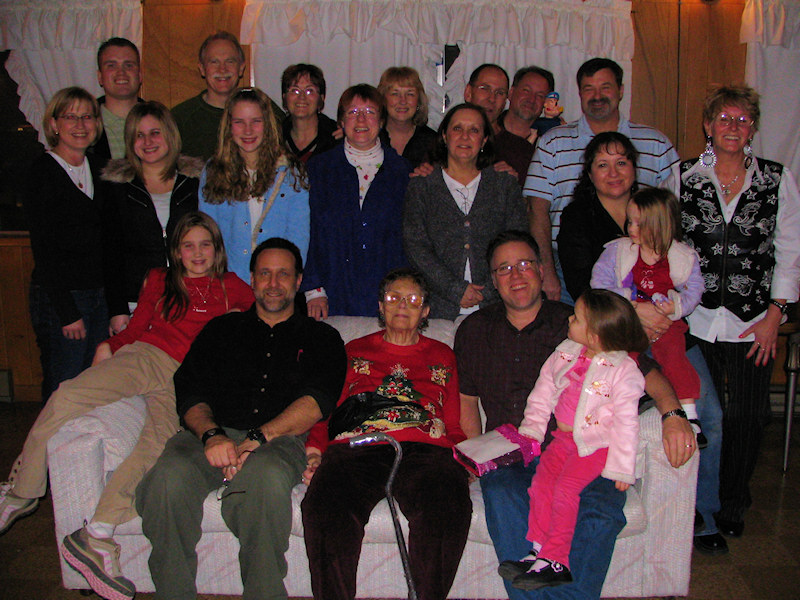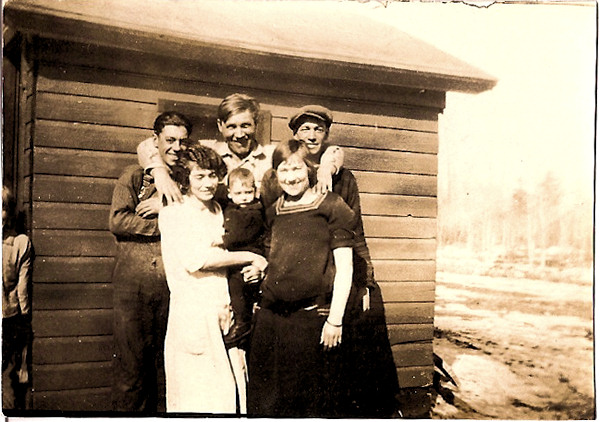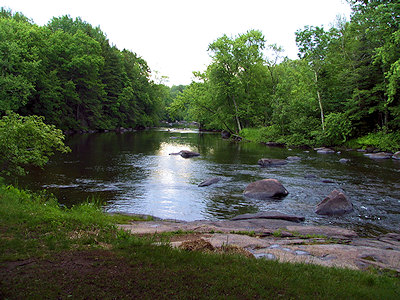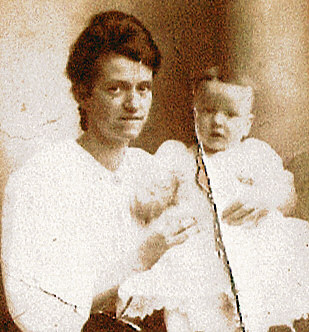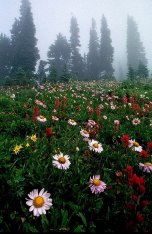 According to a press release announcement from the UK National Archives, “Germinating History: 200 year old seeds spring to life”, is exciting news for biologists as well as genealogists:
According to a press release announcement from the UK National Archives, “Germinating History: 200 year old seeds spring to life”, is exciting news for biologists as well as genealogists:
Against all expectations, seed scientists from the Millennium Seed Bank at Wakehurst Place, the Royal Botanic Gardens, Kew´s garden in West Sussex, have germinated 200–year–old seeds discovered in The National Archives – now growing into vigorous young plants.
Botanists at Kew Gardens are used to planting seeds and letting them grow, but never before has the team been asked to use seeds that date back 200 years. This is just what happened, however, when Roelof van Gelder, a guest researcher from the Royal Dutch Library, found 32 different species of seeds in 40 small packets stored in a red leather-bound notebook within files held at The National Archives.
The notebook was inscribed with the name Jan Teerlink, a Dutch merchant who is believed to have collected the seeds during a trip to the Cape of Good Hope in 1804. Germination was going to be tricky but not impossible once colleagues from the Millennium Seed Bank were called in to help.
A few seeds from each of the 32 species were sent to the Millennium Seed Bank. Now three of the 32 species have germinated and the ancient specimens are growing into healthy, vigorous young plants in the glasshouses at Wakehurst Place.
How exciting.
It’s hard for many people to understand what plants mean to genealogists. Plants are more than just pretty flowers, though in some cases, that’s all they need to be. Going through my family’s old photo albums from over the past 100 years, I find that they’ve visited many places I’ve visited, including national parks and public gardens. So when I visit these places again, physically or in my imagination, the odds are that they looked pretty much the same as they did 90 years ago when my ancestors walked the narrow pathways among the tall rhododendrons and trees. But not always. Comparing the past with the present offers insights into what was and what is now.
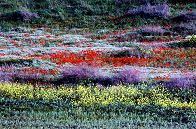 In Israel, near the airport, is Neot Kedumim, The Biblical Landscape Reserve. This unique reserve and preserve recreates the life and plant life of biblical times.
In Israel, near the airport, is Neot Kedumim, The Biblical Landscape Reserve. This unique reserve and preserve recreates the life and plant life of biblical times.
Neot Kedumim — the Biblical Landscape Reserve in Israel, halfway between Jerusalem and Tel Aviv, is a unique endeavor to re-create the physical setting of the Bible in all its depth and detail. Far more than a “garden” showing various biblical plants, Neot Kedumim embodies the panorama and power of the landscapes that helped shape the values of the Bible and provided a rich vocabulary for expressing them.
The Bible conveys its ideas not in abstract terms, but through a clear and vivid record of long human interaction with the land of Israel. Neot Kedumim draws on a variety of disciplines — such as Bible scholarship, botany, zoology, geography, history, and archeology — to bring the Bible and its commentaries to life.
…Hundreds of varieties of biblical and talmudic plants; wild and domesticated animals; ancient and reconstructed olive and wine presses, threshing floors, cisterns, and ritual baths bring to life the literal roots of the biblical tradition in the soil of the land of Israel.
By reuniting text and context, Neot Kedumim opens up before the visitor Israel’s nature as the idiom of the Bible. The symbols, prayers, and holidays of the Jewish and Christian heritage, observed and preserved for thousands of years, blossom in a new and colorful dimension at Neot Kedumim, the world’s only biblical landscape reserve.
If you want to really experience the feeling of walking in the footsteps of Jesus, Moses, Abraham, and the legends of the bible, you can almost be transported back in time in Neot Kedumim.
You don’t have to go to Israel to experience what it was like for your ancestors in biblical times. There are other public gardens found around the world featuring a biblical landscape and experience, including Lucile Halsell Conservatory in Texas, PVUMC Biblical Garden in Arizona, and Elgin Biblical Gardens in Scotland.  You can even find information and resources for recreating your own biblical and historical garden from the First Congregational Church of Fair Haven, Connecticut – Sources and Resources for Biblical Gardens.
You can even find information and resources for recreating your own biblical and historical garden from the First Congregational Church of Fair Haven, Connecticut – Sources and Resources for Biblical Gardens.
There are many types of historical gardens which have been recreated as well as preserved over the centuries. Wikipedia’s “History of Gardening” entry lists some of the famous gardens of history:
Though cultivation of plants for food long predates history, the earliest evidence for ornamental gardens is seen in Egyptian tomb paintings of the 1500s BC; they depict lotus ponds surrounded by rows of acacias and palms. The other ancient gardening tradition is of Persia: Darius the Great was said to have had a “paradise garden” and the Hanging Gardens of Babylon were renowned as a Wonder of the World. Persian influences extended to post-Alexander’s Greece: around 350 BC there were gardens at the Academy of Athens, and Theophrastus, who wrote on botany, was supposed to have inherited a garden from Aristotle. Epicurus also had a garden where he walked and taught, and bequeathed it to Hermarchus of Mytilene. Alciphron also mentions private gardens.
The most influential ancient gardens in the western world were the Ptolemy’s gardens at Alexandria and the gardening tradition brought to Rome by Lucullus. Wall paintings in Pompeii attest to elaborate development later, and the wealthiest of Romans built enormous gardens, many of whose ruins are still to be seen, such as at Hadrian’s Villa.
Byzantium and Moorish Spain kept garden traditions alive after the 4th century. By this time a separate gardening tradition had arisen in China, which was transmitted to Japan, where it developed into aristocratic miniature landscapes centered on ponds and separately into the severe Zen gardens of temples.
Among some of the most famous gardens that survive today is the well known Palace of Versailles garden near Paris. Began in 1661, the palace and the gardens continue to draw tourists from all over the world to walk through the extensive parterres, fountains and canals, designed by famous landscape artist and architect, André Le Nôtre.
 In a different kind of garden, Garden of the Gods Park in Colorado features a landscape revered by Native Americans which continues to fascinate today with its interesting red sandstone rock formations and natural sculptures.
In a different kind of garden, Garden of the Gods Park in Colorado features a landscape revered by Native Americans which continues to fascinate today with its interesting red sandstone rock formations and natural sculptures.
The Annapolis Royal Historic Gardens of Nova Scotia were opened in 1981 but they are designed to restore the 17th century fame the area was known for with it’s beautiful landscape and gardens.
The UK Database of Historical Parks and Gardens helps you find a wide range of garden locations and parks within Britain. The database will help you find gardens and parks by place and type, helping you narrow down historical gardens associated with your family’s history and geography.
The 1875 Peel Mansion Museum and Heritage Gardens of Arkansas is just one of many historic homes, mansions, and gardens around the southern United States working hard on preserving their historical landscape and homes.
So next time you are researching your family’s history, take a moment to find a garden which represents the time period and plant life of your ancestor. It may help you learn more about how they lived, what they ate, and how plants were an important part of their lives.
Most Recent Articles by Lorelle VanFossen
- The Myths and Mysteries and Hunt for Nicholas Knapp
- The Perpetual Calendar
- GenSmarts: Reminder to Not Assume
- Gensmarts Saves Your Family History Research Life
- Digging Through Historical Newspapers Online

